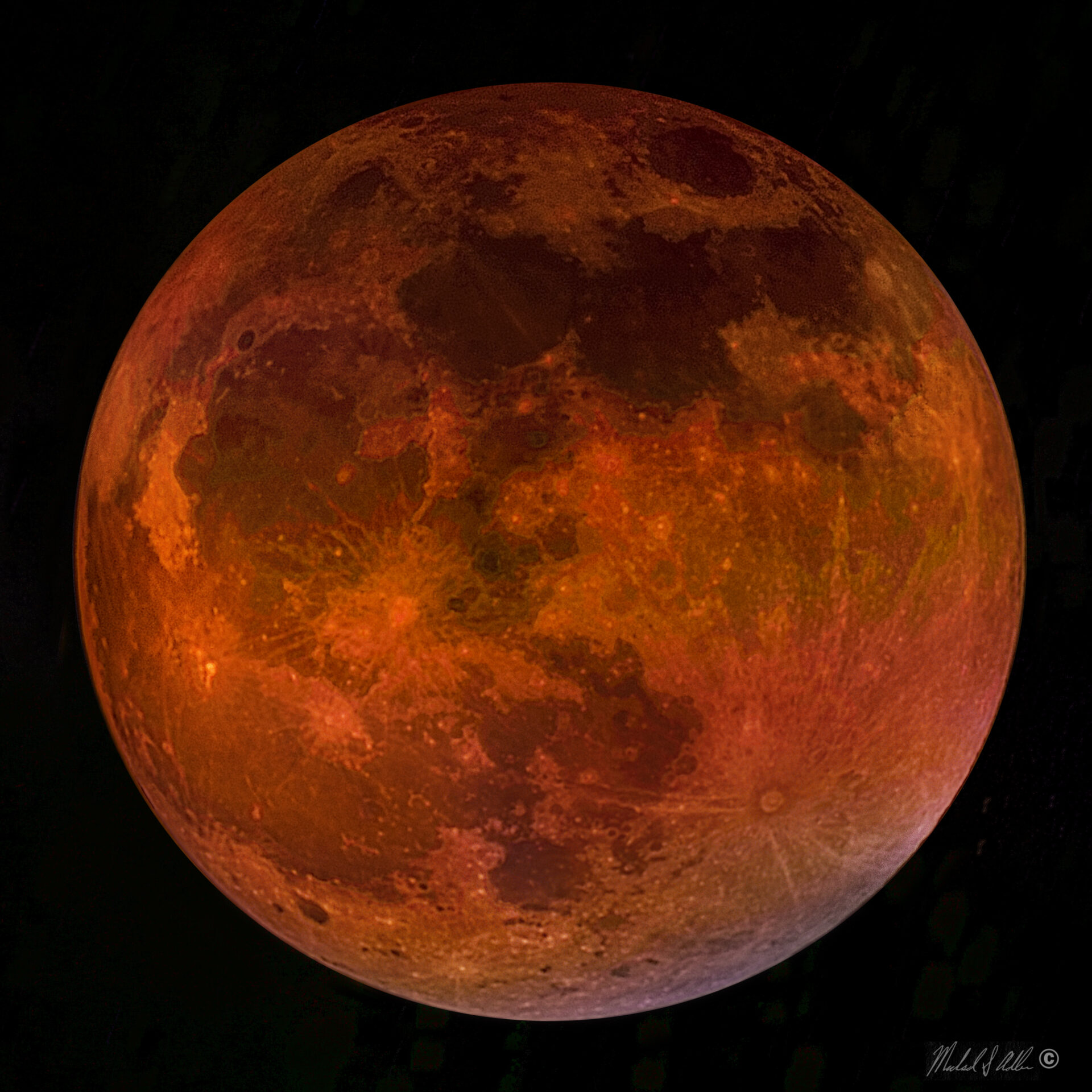Optics: 12.5″ f/8 Planewave CDK125
Mount: Software Bisque Paramount MX+
Camera: Panasonic S1H
Filters: none
Dates/Times: May 15, 2022, Earth and Sky Observatory, Jackson Hole, WY
Exposure Details: A mosaic of 2 images, each with 100 images each, 1 sec iso 800
Acquisition: TheSkyX,
Processing: AutoStakkert 3,Wiener Filter in Pixinsight, Photoshop CC2022
Lunar Eclipse, May 15, 2022
Original price was: $50.00.$40.00Current price is: $40.00.
Moon This image is a mosaic of two separate images each of which was 100 exposures on a Panasonic S1H camera using a Planewave CDK125 telescope. The super moon was too large for a single image. The images were aligned and stacked in AutoStakkert 3. The two images were then combined into a mosaic and then the Wiener restoration filter in Pizinsight was used to reduce the atmosphere blurring, and final processing done in PS 2022.
You can see that the lower right area is brighter than the rest of the pisture. This is not the direct sun light as this would be much much brighter but is scattered sun light as we in Jackson Hole were at the edge of totality. A common question is where the reddish color in a lunar eclipse comes from. It is scattered sunlight that is passing through earth’s atmosphere and is mainly long wavelength light as is the case at sunrise and sunset. It is not earthshine that exists for a solar eclipse as the earth opposite the moon is dark for a lunar eclipse and illuminated in a solar eclipse.


